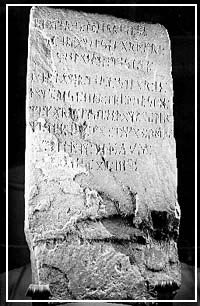Tossing the bones: an Introduction to Runes part 1
Hello again and blessed be!
So in this post I've decided to explain a little bit about runes and how to read them for divination purposes. I will also be doing a series of posts on the runes, first staring with the lore, second the meaning and thirdly on the ways to cast and read them.
There are many kinds of runes that can be used for divination. The ones I will be describing are called the Eldar Futhark, a old norse alphabet, one of three. Now when I say alphabet I do mean alphabet, the same images found on the Kensington Runestone, as well as other artifacts.
I began my journey into runes before I even knew what exactly the runes were! My journey began with mythology, I started reading about Norse mythology in 8th grade, beginning with Snorri Sturluson's the Prose Edda, and was very excited when I found a copy of the Eldar Edda. Unlike some mythologies, Norse mythology had stayed relatively unaltered, in some aspects. There are often multiple versions of these stories. I find all versions of these stories as equals, and the reason I believe this is that in all the versions of these incredible stories the message is the same. With this being said, I love learning about other versions, akin to reading a favorite story over but with new added chapters.

Image from The Kensington Runestone Museum
Now the myth of the runes, the Elder Futhark specifically, begins with the leader of the Aesir Gods, Odin. Now in most images of Odin, or Woden you see a aged warrior with one eye. Now one could assume that the loss of his eye was to some kind of mighty battle, but in fact it was for the power of knowledge. In order to drink from Mimir's well, to be given the gift of knowledge, he was tasked to offer up his own eye before he could receive a drink from the well. However this was not the only sacrifice he endured to receive knowledge,. It was during another one of these tasks that he gained the knowledge of the runes. Odin hung himself upside down for nine days and nine nights pierced by his own spear. On the final night Odin was finally gifted with the knowledge of the runes, 24 symbols were given to him. Now in a version I read it was Odin who created the 25th rune, the blank rune whom in honor of the Norns named it after their mother Wyrd.
Some rune readers choose to only use the 24 runes , I however choose to use all 25 in my readings simply because I feel that the Wyrd rune has a special place in a reading if it chooses to appear. When I first began reading runes I leaned on my background in mythology as a tool in learning the meanings. You can find many books on runes and I highly recommend reading multiple sources, as this will help you discover the similarities and other interpretations of runes. Some of the more common books you'll find are the Book of Runes by Robert Blum, The Practical guide to the Runes by Lisa Peschel, but of course use your own judgement when choosing your material. Perhaps the most important thing about learning the runes is to to trust your intuition and let it steer you in the direction you need to go. In the next blog post I will going into the meanings of the individual runes and some helpful tips on how to learn them.